
October 19, 2025 • 9 min read

October 19, 2025 • 9 min read
Rahul Mondal
Product & Strategy, Ideon Labs
Content buckets are strategic categories that organize your ad content by purpose and audience intent. Using the MECE framework ensures no overlap and complete coverage. Top brands use 6-8 buckets with optimal distribution: 60% value/education, 20% inspiration, 10% social proof, 10% promotion. Reverse-engineer successful brands' bucket strategies to accelerate your content planning and improve consistency.
Content buckets (also called content pillars) are strategic categories that organize your advertising content by purpose, topic, or audience intent. Instead of posting whatever "feels right," you systematically rotate through predefined categories.
Why content buckets matter:
The transformation:
Before buckets: Random posts, inconsistent messaging, heavy promotion
After buckets: Strategic distribution, predictable planning, balanced value-to-sales ratio
This structured approach aligns with Meta's Andromeda algorithm, which rewards creative diversity. Content buckets naturally provide the variety algorithms crave.
Start by mapping your audience's needs across their journey:
Awareness Stage:
Consideration Stage:
Decision Stage:
The fastest way to identify winning buckets? Study successful brands in your industry.
Using Vibemyad's competitive intelligence:
After reviewing 50+ ads, you might notice:
This gives you a proven framework to adapt.
Review your last 30-50 ads and naturally group them:
This reveals your intuitive buckets—now make them intentional.
MECE (Mutually Exclusive, Collectively Exhaustive) is a strategic principle from consulting that ensures complete, non-overlapping coverage.
Mutually Exclusive: No overlap between buckets. Each piece of content clearly belongs to ONE bucket.
Collectively Exhaustive: Together, your buckets cover ALL possible content needs. No gaps.
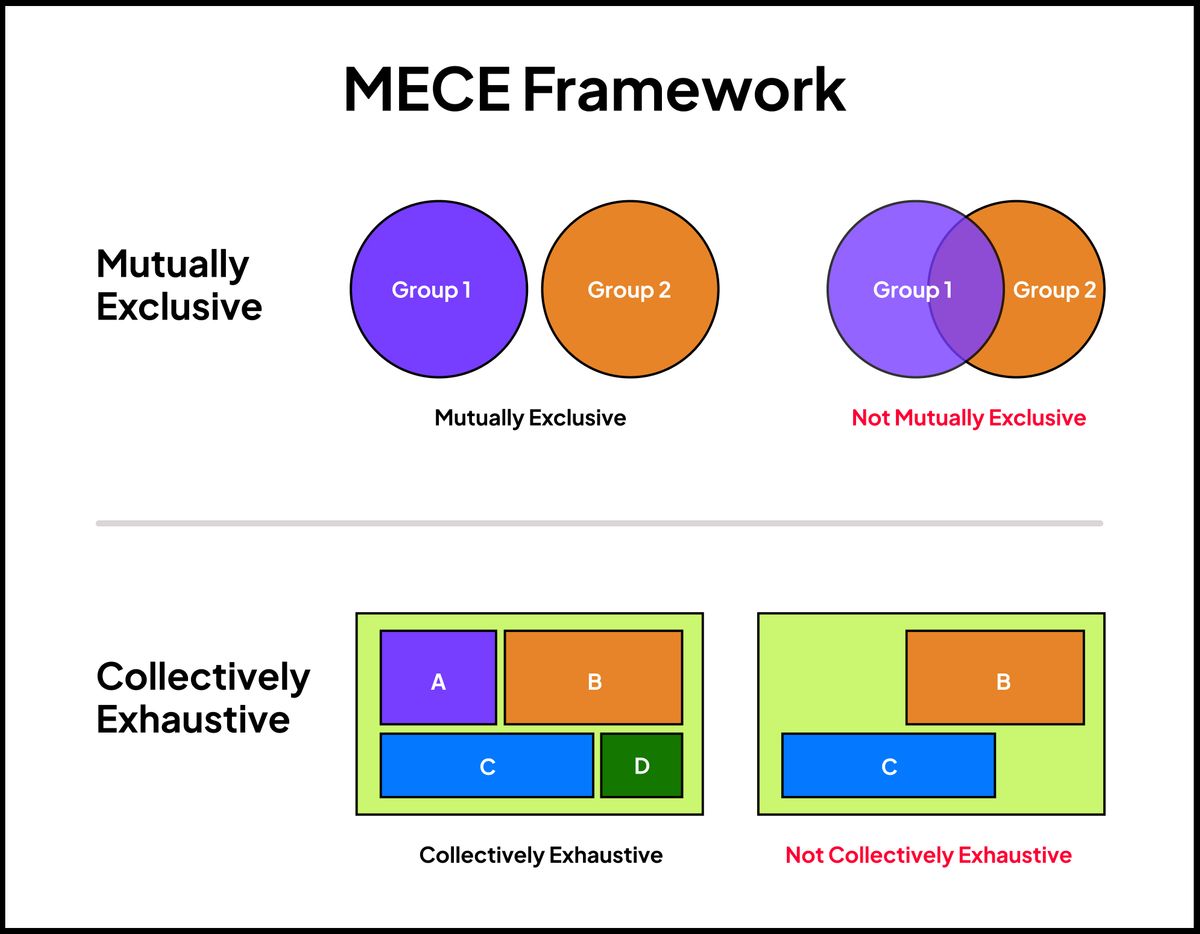
MECE Framework
Without MECE:
With MECE:
Ask these questions for each bucket:
Mutually Exclusive Test: "Could this content fit into another bucket?" If yes, refine your definitions.
Collectively Exhaustive Test: "Is there content we need to create that doesn't fit any bucket?" If yes, add a bucket or broaden definitions.
Example of Non-MECE Buckets:
Example of MECE Buckets:
Here are the most effective content buckets used by high-performing brands:
Purpose: Teach concepts, build authority, provide value
Examples:
Why it works: Education builds trust before asking for the sale. This is the foundation of content strategy.
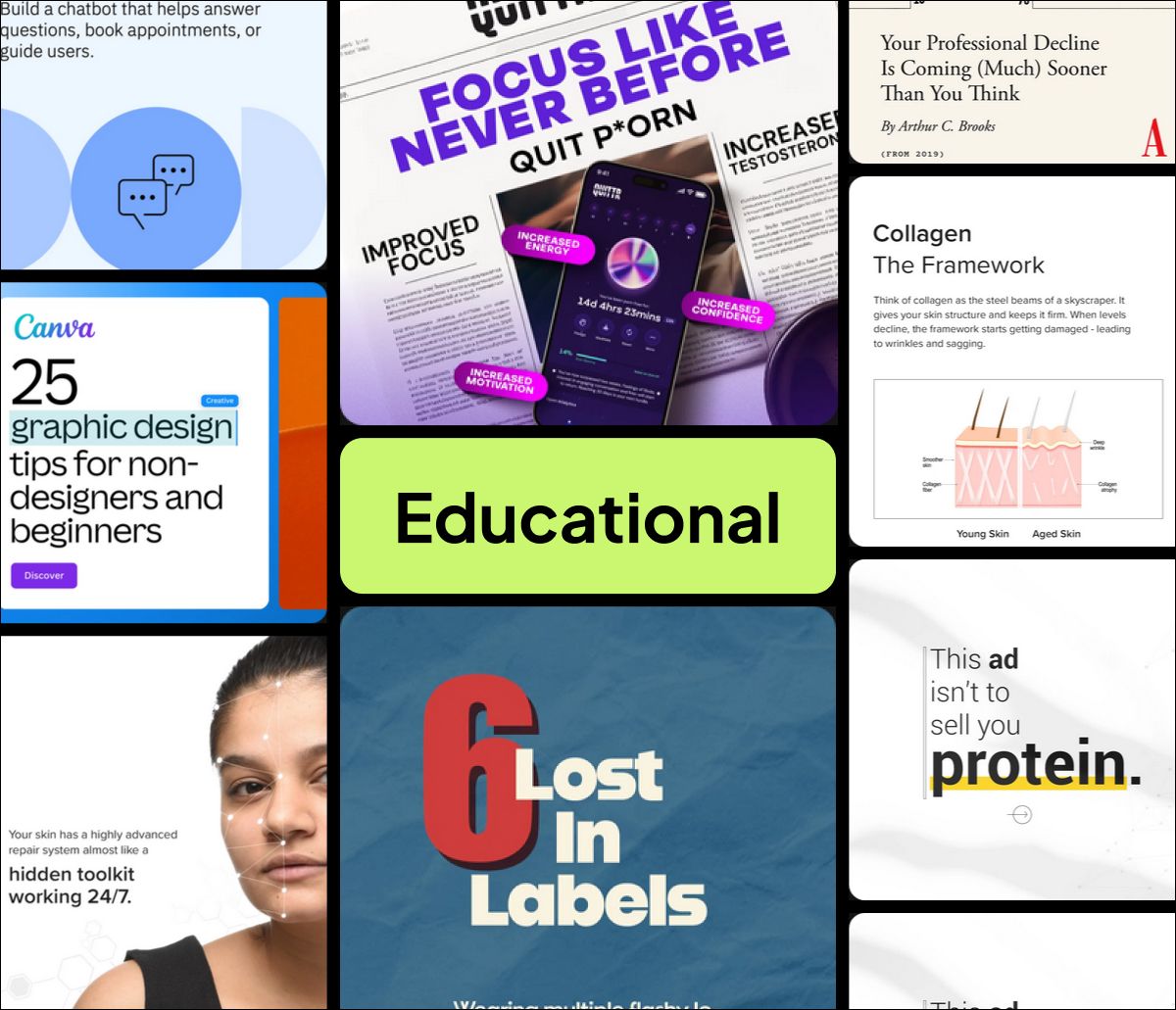
Educational Content Bucket Examples
Purpose: Show real results, testimonials, user-generated content
Examples:
Vibemyad tip: Use Explore to find high-performing testimonial ad formats in your industry.

Social Proof Content Bucket Examples
Purpose: Humanize brand, build connection, show process
Examples:
Why it works: Transparency builds trust and differentiates from competitors.
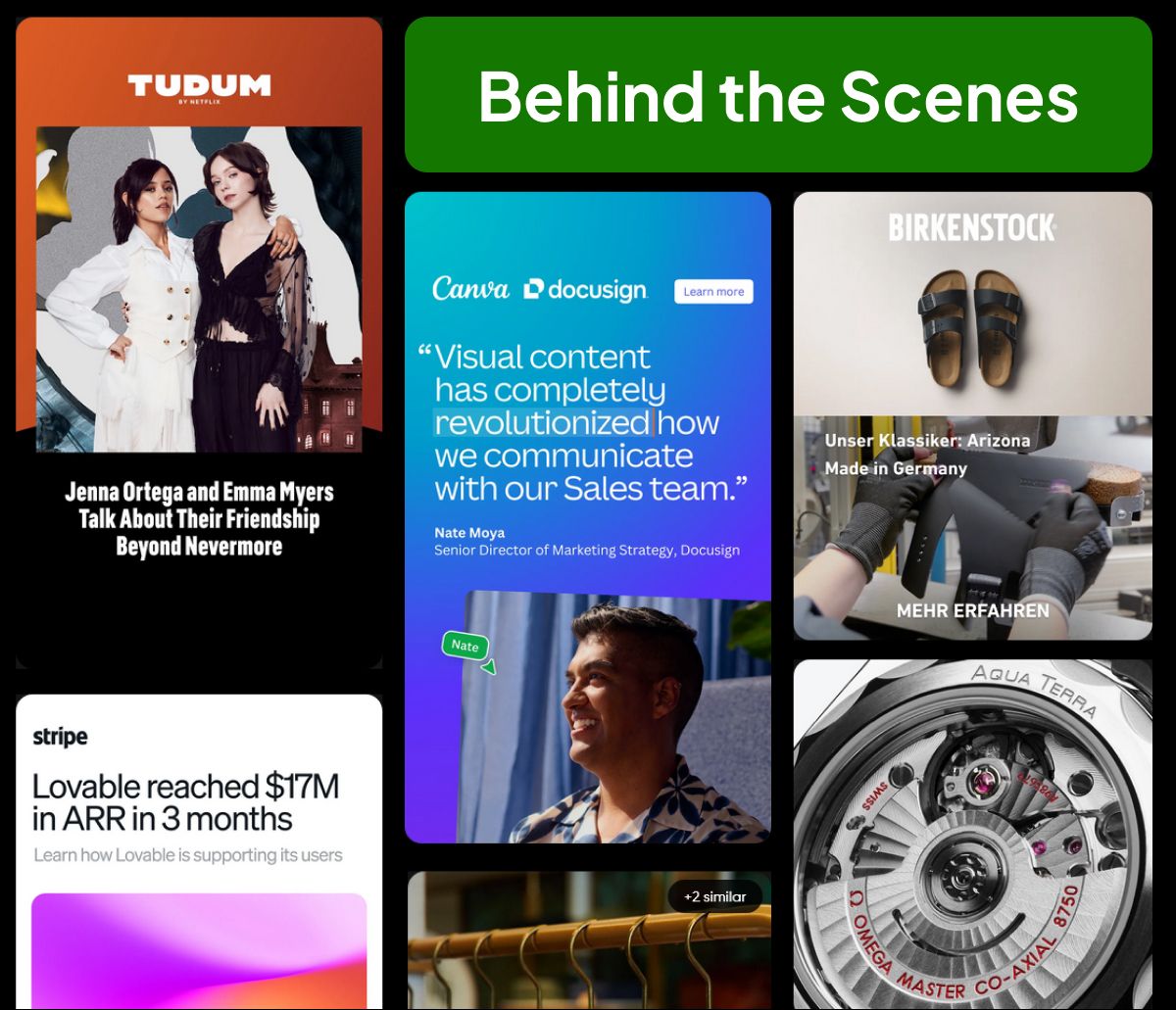
Behind the Scenes Content Bucket and its Examples
Purpose: Demonstrate product use, provide actionable value
Examples:
Pro tip: Tutorial content performs well when it solves specific problems, not just showcases features.
Purpose: Show desired outcomes, lifestyle positioning
Examples:
Note: Balance inspiration with authenticity—overly polished can feel inauthentic.
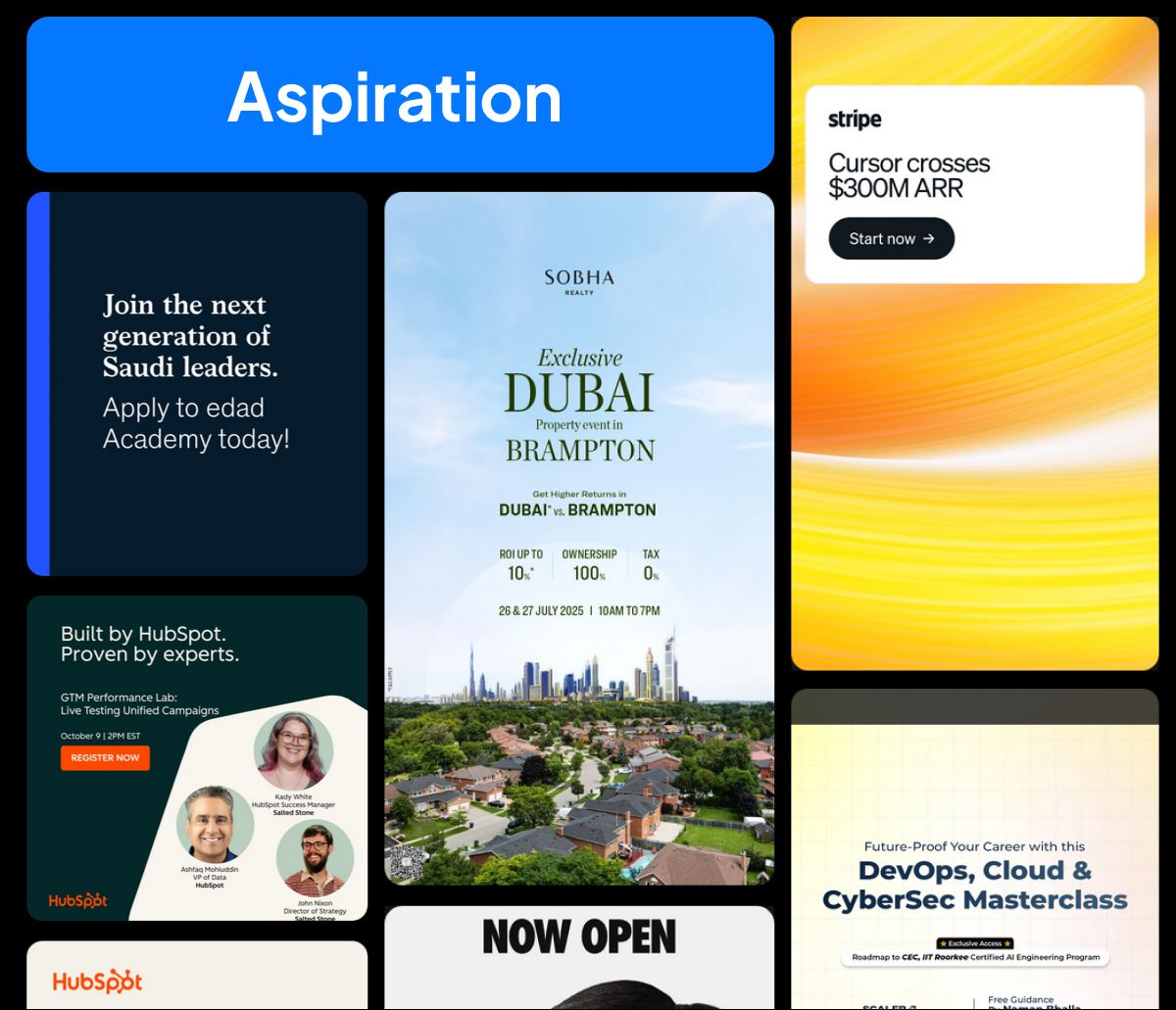
Inspiration & Aspiration Content Bucket and its Examples
Purpose: Highlight unique selling points, specifications
Examples:
Best practice: Focus on benefits (what customer gets) over features (what product has).

Product Features & Explainer Content Bucket and its Examples
Purpose: Share company ethics, mission, values
Examples:
Why it matters: Values-driven content resonates with conscious consumers, building long-term loyalty.

Brand Values Content Bucket and its Examples
Purpose: Leverage holidays, events, trends
Examples:
Planning tip: Map these out quarterly. Use Vibemyad's seasonal campaign optimizer for holiday planning.
Purpose: Identify pain points, create urgency
Examples:
Warning: Don't over-agitate. Balance problem awareness with solution optimism.
Purpose: Drive direct sales, limited offers
Examples:
Golden rule: Keep promotional content to 10-15% max. Over-promotion decreases trust and engagement.
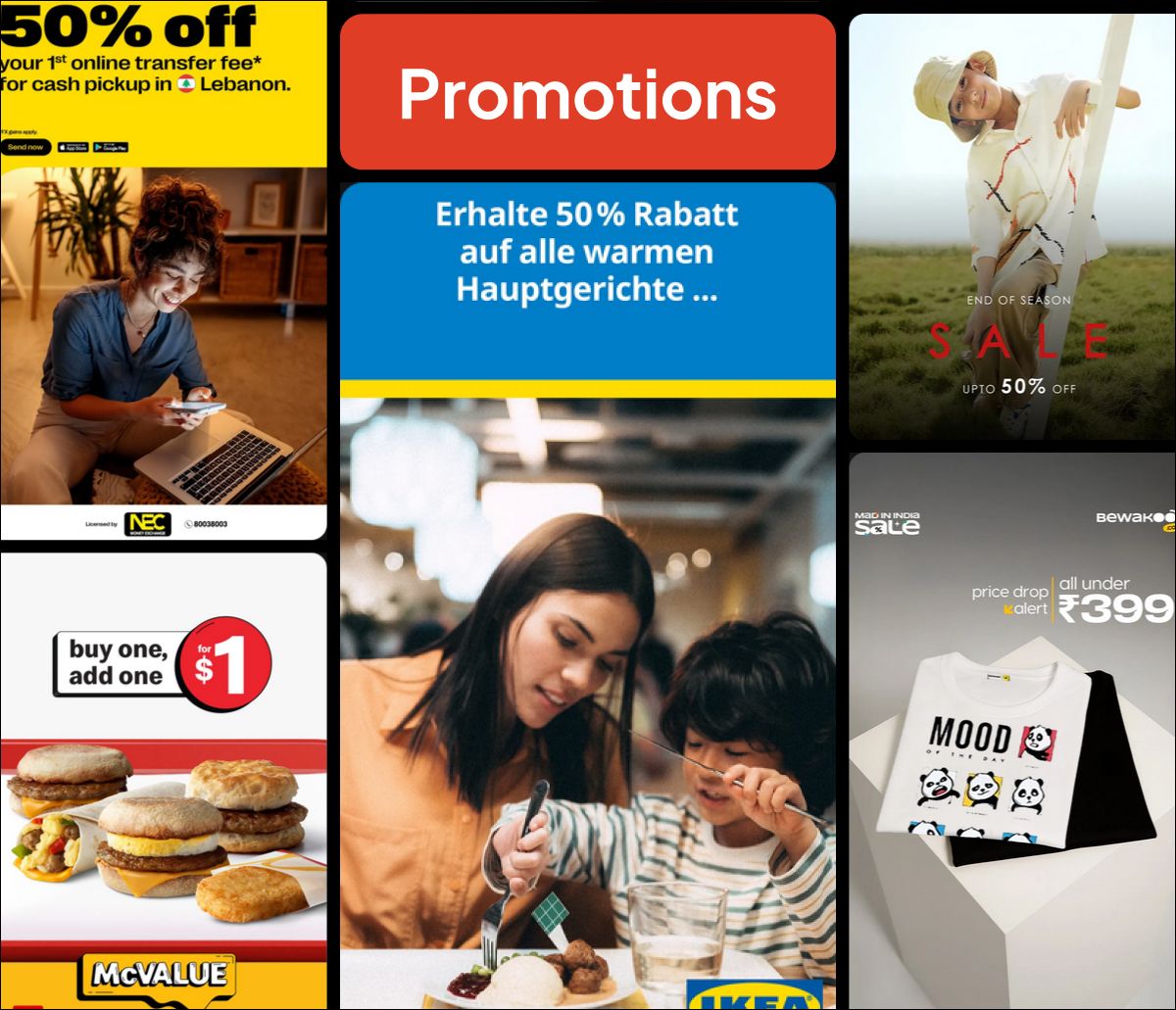
Promotions & Offers Content Bucket and its Examples
Beyond the top 10, here are specialized buckets for specific industries or strategies:
E-commerce:
B2B/SaaS:
D2C Brands:
Service Businesses:
1. Start with the top 5 universal buckets (Education, Social Proof, Tutorials, Inspiration, Promotions)
2. Add 1-3 buckets specific to your industry/audience
3. Test performance for 90 days
4. Refine based on data
Pro tip: More buckets ≠ better. 6-8 well-defined buckets are more effective than 15 unclear ones.
Understanding competitors' content bucket strategies gives you a roadmap to success. Here's how to reverse-engineer their approach:
Choose 3-5 brands that are:
Using Vibemyad's Brands feature:
Using Vibemyad's Explore:
Review 30-50 recent ads and group them into categories:
Key questions:
Don't copy their exact buckets. Instead:
✅ Adopt successful frameworks: If they use 60% education, test similar ratios
✅ Identify gaps: What buckets are they NOT using? (Your differentiation opportunity)
✅ Improve execution: Take their bucket concept, execute it better
✅ Add your unique angle: What can you do that they can't?
Example adaptation:
Competitor's strategy:
Your improved strategy:
Based on competitive analysis + your brand strengths:
Your final bucket framework:
Define 6-8 MECE buckets
Set distribution percentages (add up to 100%)
Create content calendar mapping buckets to dates
Generate variations using Vibemyad Remix
Track performance by bucket
Refine quarterly
Set up monthly reviews:
Vibemyad makes this effortless: Save competitor brands, check their feed monthly, spot new patterns instantly.
This systematic approach transforms guesswork into strategy. You're not just creating content—you're executing a data-informed content bucket system that compounds over time.
For more on analyzing competitor strategies, see our guide on reverse-engineering winning ads.
Content buckets transform your ad strategy from reactive chaos to proactive planning. The MECE framework ensures complete coverage without overlap, making your content strategy both efficient and effective.
Key takeaways:
✅ Start with 6-8 MECE content buckets covering your audience's journey
✅ Use the 60/20/10/10 distribution rule (value/inspiration/social proof/promotion)
✅ Reverse-engineer successful brands using competitive intelligence tools
✅ Test and refine your buckets quarterly based on performance data
✅ Plan in batches using your bucket framework for 90-day calendars
Stop guessing. Start strategizing.
With Vibemyad, you can:
✅ Analyze competitors' content bucket strategies with Brands monitoring
✅ Discover top-performing content types in your industry via Explore
✅ Generate bucket-specific ad variations instantly with Remix
✅ Track performance by bucket to optimize your distribution
The brands winning in 2025 aren't working harder—they're working smarter with strategic content frameworks.
👉 Start analyzing winning content strategies free →

Ananya Namdev
Content Manager Intern, IDEON Labs

Rahul Mondal
Product & Strategy, Ideon Labs

Rahul Mondal
Product & Strategy, Ideon Labs
Get notified when new insights, case studies, and trends go live — no clutter, just creativity.
Table of Contents